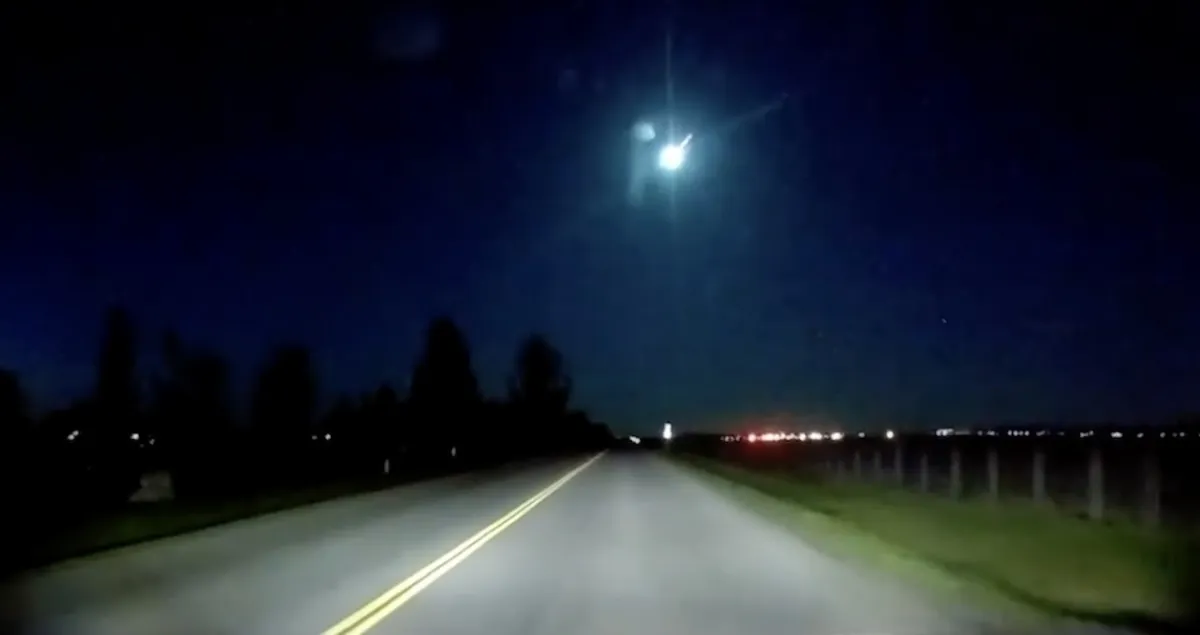
The Eta Aquariid meteor shower is rapidly approaching its peak, offering sky-watchers a spectacular celestial display. This meteor shower is particularly noteworthy because it is the last significant meteor event until late July. Renowned as one of the best annual meteor showers in the Southern Hemisphere, the Eta Aquariids promise a breathtaking experience, as confirmed by NASA.
Experts have varied opinions regarding the exact peak timing of the Eta Aquariid meteor shower, but they generally agree that the optimal viewing hours are in the early morning before dawn on Sunday, Monday, and Tuesday. According to reputable sources such as EarthSky and the American Meteor Society, the best chances to catch a glimpse of this natural wonder occur during these pre-dawn hours. Notably, on Tuesday, the moon is expected to set by 3 a.m. in all time zones, resulting in dark skies that are ideal for meteor watching.
Sky-gazers in the Northern Hemisphere can anticipate seeing about 10 to 20 meteors per hour between 2 a.m. and 4 a.m., as per the American Meteor Society. However, those located in the southern part of the United States and the Southern Hemisphere may witness significantly higher meteor counts. This variability makes the Eta Aquariid meteor shower particularly exciting for observers in these regions.
The Eta Aquariid shower is known for its swift meteors, which often leave behind persistent trails that can be visible for several seconds after the meteor has passed. While the shower is not renowned for producing bright fireballs, the experience is still captivating. The source of this meteor shower is none other than Halley’s Comet. Each spring, between April and May, Earth traverses Halley’s orbital path, leading to spectacular displays as small grains of rock and dust from the comet enter our atmosphere.
Halley’s Comet last graced the night sky in 1986 and is scheduled to return in 2061, completing its 76-year orbit around the sun. This makes the Eta Aquariid meteor shower a unique opportunity to witness the remnants of this historic comet. The meteors appear to emanate from the northeastern section of the Aquarius constellation, which is reflected in the shower's name. Although they seem to originate from the faint star Eta Aquarii, this star is actually positioned 170 light-years away, while the meteors disintegrate just 60 miles (100 kilometers) above Earth’s surface.
If you reside in an urban area and wish to enjoy the Eta Aquariid meteor shower, it is advisable to travel to a location devoid of city lights that may obstruct your view. The darker the skies, the better your chances of seeing a higher number of meteors. Look for an open space with an expansive view of the sky. Bringing a chair or blanket can enhance your comfort as you gaze upwards. Additionally, allow your eyes 20 to 30 minutes to adjust to the darkness—avoid looking at your phone during this time—to maximize your meteor spotting experience.
As the year progresses, several more meteor showers will grace the night sky. Here are the anticipated peak dates for future meteor showers, as reported by the American Meteor Society and EarthSky. Stay tuned for these astronomical events that promise to captivate stargazers around the world.